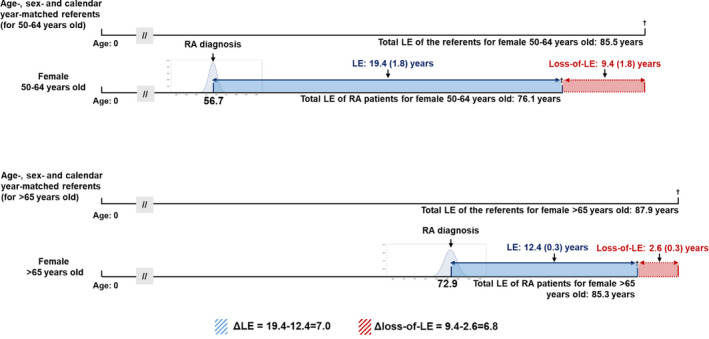Figure 2.

Comparison of loss of life expectancy (LE) estimates, adjusted for age, sex, and calendar year, in multiple cohorts. If a female patient with rheumatoid arthritis (RA) was diagnosed between 50 and 64 years of age, her life expectancy after diagnosis would be 19.4 years, or 7.0 years longer than that of a patient diagnosed at age >65 years (who had a life expectancy after diagnosis of 12.4 years). The loss of life expectancy was the difference between the life expectancy in the index cohort and that in the age‐, sex‐, and calendar year–matched referents simulated from life tables. Thus, the comparison of 2 loss of life expectancies, or Δloss of life expectancy (9.4−2.6 = 6.8), would be a difference‐in‐differences adjusted for the potential confounders. The apparent advantage of diagnosis at a younger age would be much less apparent after such an adjustment. Values are the mean ± SEM.
